Best Scopes For 300 Winchester [2025]
300 Win Mag is one of the classic choices for both hunting and long range shooting. It’s a hard-hitting cartridge that can work equally well for both (although it may not be the best for either).
To get the most out of either of those disciplines, you need an optic that can not only handle the recoil but handle the environment you’ll use it in.
From lightweight mountain rifles to 20-pound competition rifles, 300 Win Mag can, and has done it all. There are dozens of great scopes on the market, but these are the best of the best for 300 Win Mag!
Best Scopes for 300 Winchester
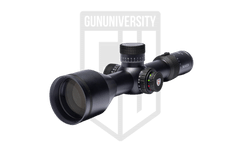 |
| Check Price | |
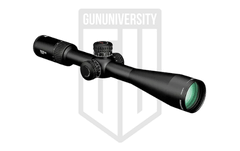 |
| Check Price | |
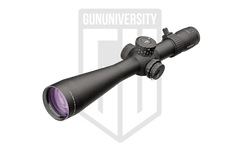 |
| Check Price | |
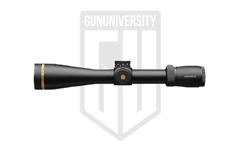 |
| Check Price | |
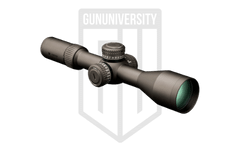 |
| Check Price | |
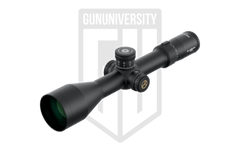 |
| Check Price | |
 |
| Check Price |
Best Scopes for 300 Winchester
Here is my list of my favorite scopes for the 300 Winchester based on the uses and capability of the caliber:
- Maven RS.4 5-30×56
- Vortex Viper PST II 5-25×50
- Leupold Mark 5HD 5-25×56
- Leupold VX-5HD 3-15×44
- Vortex Razor HD Gen II 4.5x27x56
- Athlon Cronus BTR Gen 2 4.5-29×56
- Nightforce ATACR 7-35×56
Reviews of the .300 Winchester Magnum Scopes
Below are our individual reviews of the Best 300 Winchester scopes that we felt were worth mentioning. We have included our grades for each of these scopes, the “need to know” information including the specifications, and the price.
1. Maven RS.4 5-30×56
Maven RS.4 5-30×56
Best Bespoke Rifle Scope
Made and sold directly by Maven, there is never a middle-man between you and the hands that made this scope.
- Reliability A
- Glass A
- Reticle B+
- Ergonomics A
- Value A+
Our Grade
A
Reader’s Grade
TBD
Based on 0 Reviews
Your Grade
Do You Own This Optics? Leave A Review
Success Your Grade Has Been
Added To Our Reader’s Score
We use email to verify the accuracy of our reviews. We promise to never spam you.
RS.4 5-30×56 Specs
- Magnification Range 5-30x
- Focal Plane FFP
- Weight 35 Oz
- Length 12.8in
- FoV @ 100y 23ft/3.9ft
- Illuminated Yes
- Total Elevation Adjustment 120 MOA
- Tube Size 34mm
- Zero Stop Yes
Maven RS.4 5-30×56 Review
Rolling the dice on expensive optics you’ve never seen before is always scary, but something that happens at every major match I attend is by the end of the day at least one person on my squad goes home saying they want a Maven of their own.
I normally run their binoculars, but I’ve often also used their scopes at shooting matches.
In my personal experience, the glass quality is truly shocking, the rings are super smooth, and the turrets are very “clicky” and responsive.
Everything considered, their quality is simply outstanding and that is exactly what you deserve from what is really a bespoke optics maker.
In an industry where most optics are made by faceless drones overseas, it feels great having a direct connection to the manufacturer by never dealing with a retailer or middle-man. Plus, the savings from buying direct is put back into the quality of the optics, and a product that feels amazing to shoot with.
Coming in with a 56mm objective and weighing in at 35 ounces this is a big beefy scope. Some might consider it only suited for a bench or a comp rifle, but I say you only live once, and hunting with such a scope is a real treat.
Granted, if you just can’t swing the weight, take a look at Maven’s RS.5 in SFP.
Maven RS.4 5-30×56 Pros and Cons
- High quality build, great price point
- Customize it for a super nice scope
- Ultra-clicky turrets
- Reticles don’t have many options
Maven RS.4 5-30×56 Deals
-
$1,800.00
2. Vortex Viper PST II 5-25×50
Vortex Viper PST II 5-25×50
Best Entry Long Range
One of the most recommended entry-level scopes ever made, the Viper PST II brings a lot to the table.
- Reliability A+
- Glass B+
- Reticle A
- Ergonomics A-
- Value A+
Our Grade
A
Reader’s Grade
A
Based on 10 Reviews
Your Grade
Do You Own This Optics? Leave A Review
Success Your Grade Has Been
Added To Our Reader’s Score
We use email to verify the accuracy of our reviews. We promise to never spam you.
Vortex Viper PST II 5-25×50 Specs
- Magnification Range 5-25x
- Focal Plane FFP
- Weight 31.2 Oz
- Length 15.79in
- FoV @ 100y 24.1ft/4.8 ft
- Illuminated Yes
- Total Elevation Adjustment 70 MOA
- Tube Size 30mm
- Zero Stop Yes
Vortex Viper PST II 5-25×50 Review
I often compare scopes to cars since most Americans know at least a little about cars. If you want the Ford F-150 of scopes, the Viper PST II is it.
This is a great do-all scope for nearly every application from hunting to PRS to F-class. It won’t be perfect for each of those roles, but it’s a great all-rounder.
It won’t break the bank, and it holds resale value. There will almost always be at least one other person at the range with the same scope.
Oddly, nothing on its own really stands out about the Viper PST II. The glass isn’t the best, the turrets aren’t perfect, you don’t get a magical reticle that nothing else has.
Really, it’s in the aggregate that the Viper PST II shines. While nothing is perfect or the best, what it combines into is a scope that drips with value and gives you everything that you really need in a scope.
Plus, it has Vortex’s warranty.
Vortex Viper PST II 5-25×50 Pros and Cons
- Stellar price to value ratio
- Vortex warranty
- Ford F-150 of scopes, gets the job done
- Ford F-150 of scopes, everyone has one
- A little heavy
Vortex Viper PST II 5-25×50 Deals
-
$1,099.99
-
$1,099.00
-
$999.99
3. Leupold Mark 5HD 5-25×56
Leupold Mark 5HD 5-25×56
Best American Made
There really isn’t many options for an American made scope, thankfully — Leupold makes a great one.
- Reliability A-
- Glass A
- Reticle B+
- Ergonomics A+
- Value B-
Our Grade
A-
Reader’s Grade
A+
Based on 8 Reviews
Your Grade
Do You Own This Optics? Leave A Review
Success Your Grade Has Been
Added To Our Reader’s Score
We use email to verify the accuracy of our reviews. We promise to never spam you.
Leupold Mark 5HD 5-25×56 Specs
- Magnification Range 5-25x
- Focal Plane FFP
- Weight 30 Oz
- Length 15.7in
- FoV @ 100y 20.4ft/4.2ft
- Illuminated Yes
- Total Elevation Adjustment 120 MOA
- Tube Size 35mm
- Zero Stop Yes
Leupold Mark 5HD 5-25×56 Review
The fact of life is that most scopes are made outside of the USA. After winning two world wars, we decided to let the Germans and Japanese make the best scopes, a strange consolation prize.
While Leupold still sources their glass from Japan (no other option really) they design, make, and assemble everything else in the USA.
But supporting American workers isn’t where it ends, Leupold also just makes one of the best scopes you can get.
The glass has always felt a little cool for my taste, but the durability of the Mark 5 series cannot be ignored and is almost on par with Nightforce.
Combine that with really good tracking and build quality and you have a killer scope.
Leupold Mark 5HD 5-25×56 Pros and Cons
- Super durable
- American made (except the glass)
- Japanese Glass – it’s some of the best
- Better reticle = More money
Leupold Mark 5HD 5-25×56 Deals
-
$2,399.99
-
$2,099.98
-
$2,399.99
4. Leupold VX-5HD 3-15×44
Leupold VX-5HD 3-15×44
Best American Made Hunting Scope
Almost as good as the Mark 5 HD series scopes, this is more hunting oriented
- Reliability A-
- Glass A
- Reticle B+
- Ergonomics A+
- Value B+
Our Grade
A-
Reader’s Grade
TBD
Based on 0 Reviews
Your Grade
Do You Own This Optics? Leave A Review
Success Your Grade Has Been
Added To Our Reader’s Score
We use email to verify the accuracy of our reviews. We promise to never spam you.
Leupold VX-5HD 3-15×44 Specs
- Magnification Range 3-15x
- Focal Plane SFP
- Weight 22 Oz
- Length 13.6in
- FoV @ 100y 38.3ft/7.7ft
- Illuminated Yes
- Total Elevation Adjustment 75 MOA
- Tube Size 30mm
- Zero Stop Yes
Leupold VX-5HD 3-15×44 Review
Very close in every way to the Mark 5 HD line, the VX-5 has a lot more hunting features and much lower weight.
The 3-15x range is perfect for nearly every type of hunting from 50-yard deep forest to 700-yard canyon to canyon western hunt.
At 22 ounces the VX-5 is not super lightweight, but it isn’t heavy either. It’s right in a sweet spot that doesn’t give up durability but also isn’t like mounting a boat anchor to your light rifle.
What might come as a real surprise though is the 75 MOA of elevation adjustment, this is perfect for western long range hunts where you need every bit of elevation.
75 MOA of adjustment means you’ll be able to dial a 180gr Power Shok round to over 1,000 yards.
Now that’s some long range.
Leupold VX-5HD 3-15×44 Pros and Cons
- Basically SFP of the MK 5HD
- Ultra-durable construction
- 22 oz is perfectly lightweight
- Reticle surcharges
Leupold VX-5HD 3-15×44 Deals
-
$1,099.99
-
$999.99
-
$1,299.99
5. Vortex Razor HD Gen II 4.5-27×56
Vortex Razor HD Gen II 4.5-27×56
Best Warranty
Loved by competition shooters for years and have taken loads of game at long range, the Razor HD II is one of the GOATs.
- Reliability A+
- Glass A
- Reticle A
- Ergonomics A
- Value A+
Our Grade
A
Reader’s Grade
A
Based on 4 Reviews
Your Grade
Do You Own This Optics? Leave A Review
Success Your Grade Has Been
Added To Our Reader’s Score
We use email to verify the accuracy of our reviews. We promise to never spam you.
Vortex Razor HD Gen II 4.5-27×56
- Magnification Range 4.5-27x
- Focal Plane FFP
- Weight 48.5 Oz
- Length 14.4in
- FoV @ 100y 25.3ft/4.4ft
- Illuminated Yes
- Total Elevation Adjustment 113.5 MOA
- Tube Size 34mm
- Zero Stop Yes
Vortex Razor HD Gen II 4.5-27×56 Review
With the number of competitions that this scope has won over the years it is hands down one of the best scopes ever made, from long range to hunting, this can do it all.
Sure, it’s a bit long in the tooth now and it weighs a ton, but if you want a scope you can really, really rely on, you won’t go wrong with the Razor HD Gen II.
One really nice benefit is that because it has been around for so long you can get some really killer deals on it.
While MSRP is still $2,900, it’s totally normal to find it for $1,800 or $1,900 street price.
When you’re saving that much money, this becomes a very attractive option.
Vortex Razor HD Gen II 4.5-27×56 Pros and Cons
- A king in the field for over 7 years.
- Trusted and used in long range shooting
- Gen II HD can be found for $700+ off MSRP.
- Age of the optic is starting to show
- Almost 10 ounces heavier
Vortex Razor HD Gen II 4.5-27×56 Deals
-
$2,499.99
-
$2,499.00
-
$2,799.00
6. Athlon Cronus BTR Gen II 4.5-29×56
Athlon Cronus BTR Gen II 4.5-29×56
Optics are very much you get what you pay for, the Cronus stands out by being much more than what you pay for. $500+ less than the Razor HD Gen II and widely considered to be on par with it.
- Reliability A+
- Glass A-
- Reticle A-
- Ergonomics A+
- Value A+
Our Grade
A
Reader’s Grade
A
Based on 4 Reviews
Your Grade
Do You Own This Optics? Leave A Review
Success Your Grade Has Been
Added To Our Reader’s Score
We use email to verify the accuracy of our reviews. We promise to never spam you.
Cronus BTR Gen 2 Specs
- Magnification Range 4.5-29x
- Focal Plane FFP
- Weight 38.5 Oz
- Length 14.3in
- FoV @ 100y 24.8ft/3.83ft
- Illuminated Yes
- Total Elevation Adjustment 110 MOA
- Tube Size 34mm
- Zero Stop Yes
Cronus BTR Gen 2 Review
Most of the time, optics are one of the products that you get what you pay for. What really stands out to me about the Cronus line is that they punch so far outside of their price range.
I’ve shot these side-by-side with Vortex Razor HD Gen IIs and most of the time I cannot tell a difference except for the reticle.
Now with the Gen II update, the Cronus is better in almost every way and about 10 ounces lighter.
Super clicky turrets, amazing glass, huge adjustment range, 110 MOA of elevation, and ultra-smooth parallax and magnification rings. The Cronus brings high quality build construction in every way.
Athlon Cronus BTR Gen 2 4.5-29×56 Pros and Cons
- High value/cost ratio
- Lifetime unlimited warranty
- Gen II update addressed every weakness of the optic
- Restocks from Athlon come few and far between
- Limited reticle options
Athlon Cronus BTR Gen 2 4.5-29×56 Deals
-
$1,699.99
-
$1,599.99
7. Nightforce ATACR 7-35×56
Nightforce ATACR 7-35×56
Good enough for US SOCOM and for world-class competition shooters, good enough to take that buck you’ve been tracking all year.
- Reliability A+
- Glass A
- Reticle A+
- Ergonomics A
- Value B-
Our Grade
A
Reader’s Grade
A-
Based on 6 Reviews
Your Grade
Do You Own This Accessory? Leave A Review
Success Your Grade Has Been
Added To Our Reader’s Score
We use email to verify the accuracy of our reviews. We promise to never spam you.
Nightforce 7-35×56 Specs
- Magnification Range 7-35x
- Focal Plane FFP
- Weight 39.3 Oz
- Length 16in
- FoV @ 100y 15ft/3.4ft
- Illuminated Yes
- Total Elevation Adjustment 100 MOA
- Tube Size 34mm
- Zero Stop Yes
Nightforce 7-35×56 Review
If you like to shoot wicked hot handloads and are worried about your scope standing up to the recoil, get a Nightforce and never worry again.
Really though, Nightforce is legendary for building some of the most durable scopes to ever mount a rifle and it really shows.
Shockingly, they also do it while keeping the weight down to a reasonable level.
This might be big and bulky on a hunting rifle, but when it comes to a long range shot it won’t matter if you’re on the square range or the field the ATACR will deliver for you in a big way.
There is one issue though, the glass quality isn’t totally up to par. Don’t get me wrong, the glass is amazing and wildly better than almost anything that is lower-priced.
But when you compare the ATACR glass to other scopes in the $3,000-$4,000 range, Nightforce is around the bottom of the list.
To me, this hurts the overall value a bit, but I also look to Nightforce scopes for their unmatched durability, not their unmatched glass.
Nightforce ATACR 7-35×56 Pros and Cons
- Almost impossible to break
- One of the most respected brands in the market
- Built like a tank, but weighs like one too
Nightforce ATACR 7-35×56 Deals
-
$3,100.00
-
$3,850.00
-
$3,850.00
Best 300 Winchester Magnum Scopes – Buyer’s Guide
300 Win Mag is a great cartridge for a whole range of applications, but where it really shines is putting a lot of energy into a target a long distance away from you.
If you want a long range cartridge for slapping steel or shooting PRS, 300 Win Mag isn’t your best option due to the cost of ammo, recoil, and the increased learning curve of magnums.
However, if you need to put energy on target, a nice big magnum like 300 Win Mag is what is called for.
From hunting deer to hunting elk at 700 yards or more, a 300 Win Mag can get the job done. With that in mind, choosing the right scope can really help amplify the strengths of 300 Win Mag.
Most modern scopes from a decent manufacturer will be able to handle the recoil of 300 Win Mag, but you’ll also want a scope that lets you reach out as far as the cartridge is capable of and one that hopefully won’t weigh a ton if you’re packing your rifle any real distance.
In this guild we’ll go over some common terms, some important things to look out for, and exactly how you can determine what scope is the best scope for you.
Why These Exact Scopes For 300 Winchester Magnum?
First of all, all of the scopes I’ve recommended are strong enough to survive 300 Win Mag recoil for a lifetime.
They will, as long as something else isn’t broken, never lose zero, never drift randomly, and always give you the glass quality you need to reach out a very long distance.
On top of that, every scope on this list has features and specs that give you the tools you need to get the most out of your rifle.
What, why, and how we’ll cover below.
The Right Scope For The Right Rifle
Most people use 300 Win Mag as a hunting cartridge or as a long range precision cartridge.
I would strongly advise that it is a much better hunting cartridge than it is a long range precision cartridge, but it can do both very well.
If your rifle is focused on hunting, get a scope that gives you hunting features and tools. Likewise, if your main goal is precision long range shooting, lean toward those options.
Getting a hunting rifle and slapping a long range precision scope on it will work, but it’s limiting and doesn’t amplify your system as much as it could.
The same goes the other way also, putting a hunting scope on a PRS rifle works but it isn’t awesome.
And with that, let’s dig into what the specifications are, why they are important, and what you need to look for.
What Specs Matter Most
Once you know what you want to do with your rifle, it’s important to understand the specs of each scope, and other scopes like these, so you can really judge what is going to work best for you and your budget.
Magnification Range: Magnification specs are normally given as “2-25×56” or numbers like those, the “2-25” is the magnification range meaning the scope can magnify the target by anywhere between 2x and 25x.
Generally speaking, there is no minimum recommended magnification or a minimum that is too low.
Having a lower floor is always nice since at a low power magnification setting you get the widest field of view and the largest eye box, where your head/eye can be in relation to the scope and still see through it properly.
However, there is such a thing as too much magnification.
More magnification means a smaller eye box, a smaller field of view, and at very high magnification can amplify mirage.
While scopes in the 40x+ range do have a place, they are really for niche competition shooting like F-Class.
For hunting, and for PRS style shooting, anything around 25x is about the max that you’ll ever need. In fact, most hunters use around 16-20x when hunting. For PRS, most competition shooters find that 12-15x is normally the sweet spot.
That said, higher magnification can be nice for a really precise shot. It’s all about tradeoffs.
FFP or SFP: When I’m looking at a new scope, the first thing I check is if it is SFP or FFP.
Second Focal Plane (SFP) means that your reticle will never change size while you adjust the magnification of the scope. If a 2-25x50mm scope is SFP then the reticle will be the same size at 2x as it is at 10x and 25x.
This can be nice for hunting since you always have an easy-to-see reticle. But it also means that any MOA or MRAD or BDC marks in the scope reticle will only be accurate when at the calibrated magnification, normally the max magnification.
If you’re in your scope at want to hold over 2 MOA and you have a reticle with a MOA marking, you’ll need to be at the calibrate magnification for the 2 MOA marking to be true.
First Focal Plane (FFP) has the reticle so that it changes size as you adjust magnification. If that same 2-25x50mm scope is FFP, the reticle will be very small at 2x but very large at 25x.
This might mean that you have a cluttered or hard to see reticle at lower magnification, but it also means that your MOA/MRAD/BDC marks are always accurate. In an FFP scope a 2 MOA mark is 2 MOA no matter what size the reticle is or what magnification you’re at. 2x, 5x, 25x, it’s always 2 MOA.
Personally, I only buy FFP scopes. They are much easier to use in competition shooting and now that I’m used to them, I would never go back to SFP. I like being able to hold over and mil targets no matter what magnification I’m on.
For a lot more info on SFP and FFP, take a look at our article on it here!
Weight: This should be fairly self-explanatory. Heavy things are heavy. If you want to hike your rifle in and out of the mountains, I would strongly recommend a lighter scope. But if this is a bench rifle, go big!
Keep in mind that heavy scopes normally are built stronger or have more features. You can’t make a 12-ounce scope with the same quality and specs that you can make a 35-ounce scope.
But that 12-ouncer is a lot easier to hoof 12 miles and 2,000ft of elevation.
Field of View: Simply, field of view is how far side to side that you can see. Normally this number is given to you at 100 yards so that everything is mostly the same. If we say 21ft/5ft on a 2-25x56mm scope, this means that you can see 21-feet around at 2x magnification and 5-feet around at 25x magnification.
Generally speaking, FoV isn’t a supercritical spec to keep an eye on. While all scopes are slightly different, they will normally be very similar as long as they are the same magnification, objective size, and tube size. Even when these specs are a little different, you’re normally only looking at a difference of a few feet plus or minus.
More FoV is always nice, but it’s not a deal-breaker to me normally.
Illumination: Most good scopes these days have illumination, but not all of them do. Illumination is basically guaranteed contrast when you’re shooting. Some reticles light up the entire thing, some reticles only do the middle. It just kind of depends on how that scope does it.
You can have a preference for the design type but both are pretty good to me and do the same job.
If you only shoot in the mid-day sun punching steel painted orange against a green hill, an illuminated reticle isn’t going to matter.
But when it’s in the twilight part of the day and you’re trying to finish a hunt on a big animal that has spent its entire life blending into the environment and you’re trying to put your black reticle on his dark brown hide, especially if it’s in the shade of a tree or in the shadow of a mountain, you’ll be very thankful to have an illuminated reticle.
Likewise, if you’re on the competition line at the last stage of the day and shooting steel targets that have been shot up since 8am that morning, a nice bright red reticle really pops against those grey targets on that grey dusty hillside.
Total Elevation Adjustment: This is how far your scope can adjust top to bottom. Broadly speaking, more is better. But you might not need more.
For a cartridge with a ballistic arc like a rainbow, say .22 LR, a LOT of adjustment is needed to punch out long distances.
400 yards for .22 LR requires around 67 MOA of adjustment.
But with 300 Win Mag, you have a much flatter arc to work with.
400 yards with 300 Win Mag is (depending on your load) only about 6 MOA of adjustment. Even reaching out to 1,000 yards only takes around 30 MOA.
However, when you’re looking at scope specs keep in mind that what is listed is the total adjustment range. 110 MOA means 110 top to bottom. Since your reticle is going to be zeroed somehow roughly in the middle, you only have half of the total to really use.
110 MOA total means you have around 55 MOA of usable adjustment.
If you’re not sure of the differences between MOA and MRAD, take a look at our articles on MOA and MRAD!
Zero Stops: A zero stop lets you set your zero after you’ve aimed in your rifle. With a zero stop you can dial out for longer shots, but then dial right back to where your zero is with confidence. This is a nice feature, but not the end of the world to be missing. Still, I generally greatly prefer scopes that have it.
These are the basic specs to look at, once you have these worked out for what you need the rest are bonuses.
Don’t forget to look over those spec sheets to see exactly what each scope offers!
You Bought A Scope, Now What?
After you’ve got your scope and rifle picked out, you’ll need to get it all mounted and zeroed.
While you can get a gunsmith to do this for you, this is a pretty easy process that you should know yourself so that you can fix it in the field if something happens.
You’ll need rings, a base, a torque screwdriver, and either small levels or a plumb bob, but it’s a lot easier than it might sound.
This topic should be an entire article on its own, so I’ll let a true expert give you the details. Take a look at our How To Mount A Scope [2022]: 7 Steps To Installing A Riflescope The Right Way!
After it is all mounted up, you just need to zero it.
Zeroing your rifle is the process of getting your point of aim to match your point of impact at a set distance.
Unless you have a niche application, zeroing a rifle at 100 yards is pretty much the standard.
My advice is to start close, getting a shot on paper at 25 yards is a lot easier than 100 yards. Once you have a good idea of where you’re hitting, adjust the scope and back up the target until you’re at your zeroing range.
For a detailed breakdown of the whole process, take a look at these! How To Adjust A Rifle Scope [2022] and How To Sight In A Rifle Scope [2022]: Zeroing Made Easy!
Wrapping It All Up
This is a lot of information to break down so make sure you read it twice. Getting the right rifle and the right scope together makes for a truly amazing system that you’re sure to love.
300 Win Mag is a classic cartridge with a ton of power and precision on tap. Pair that with any of the scopes on this list and you’ll have a surefire winner.
Just remember that you get what you pay for. We’re all on a budget, but you’ll really get a lot more out of your rifle if you start with a fantastic scope.
Recent Posts
November 21, 2025
November 20, 2025
November 17, 2025
November 17, 2025

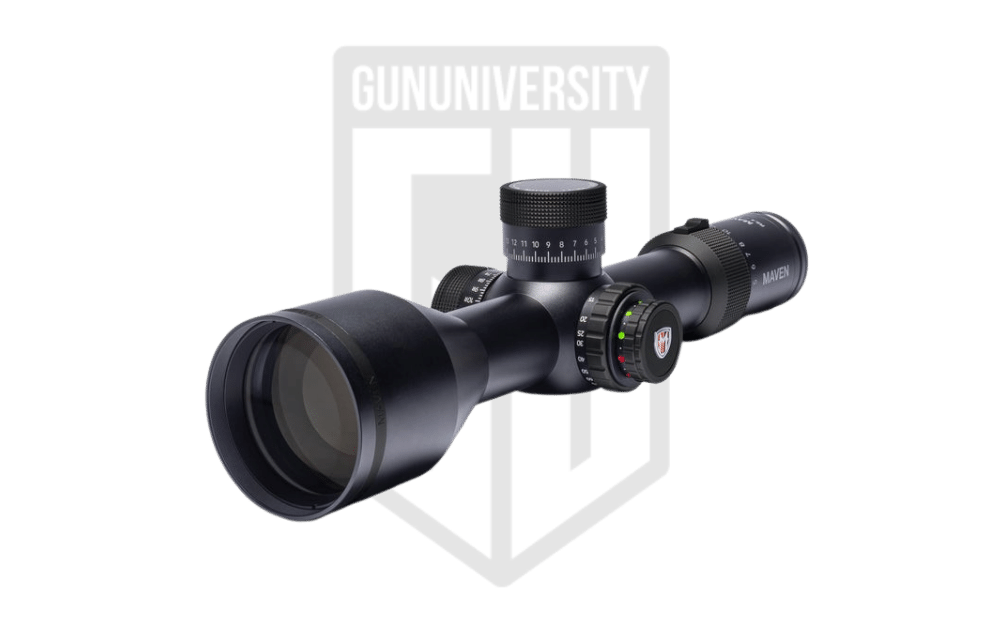

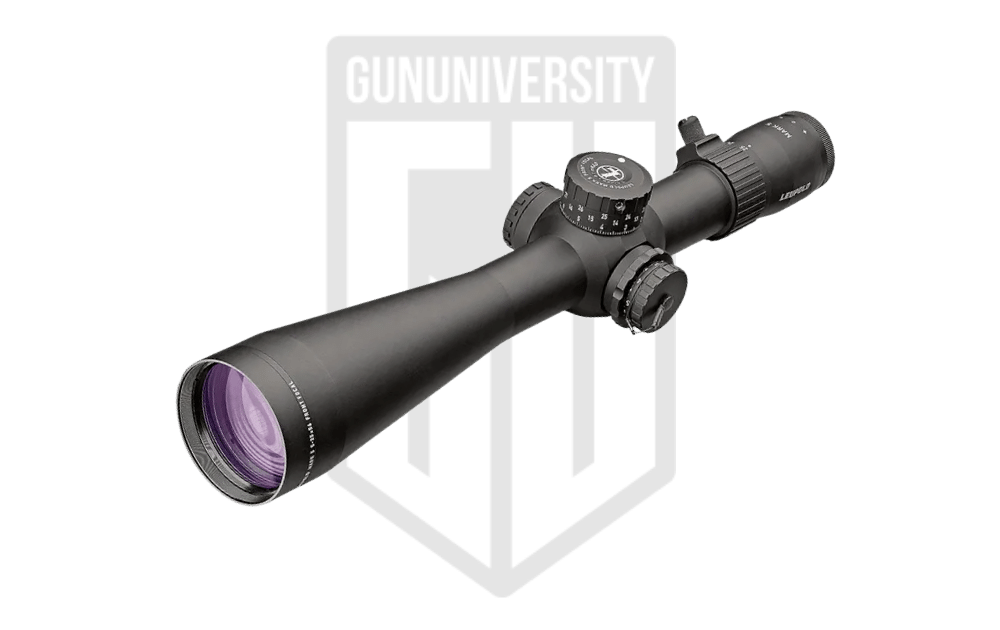


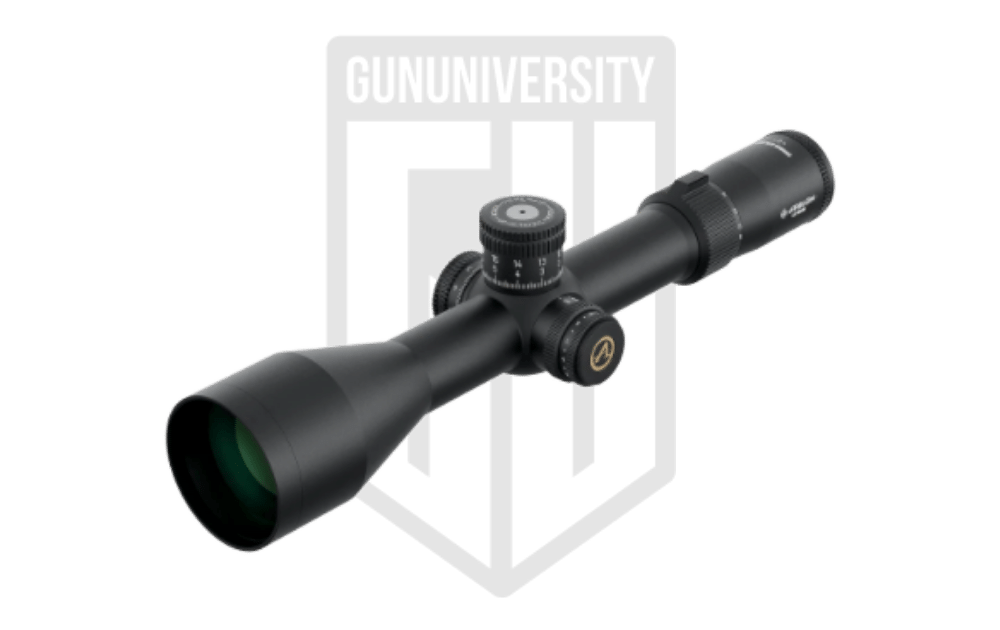
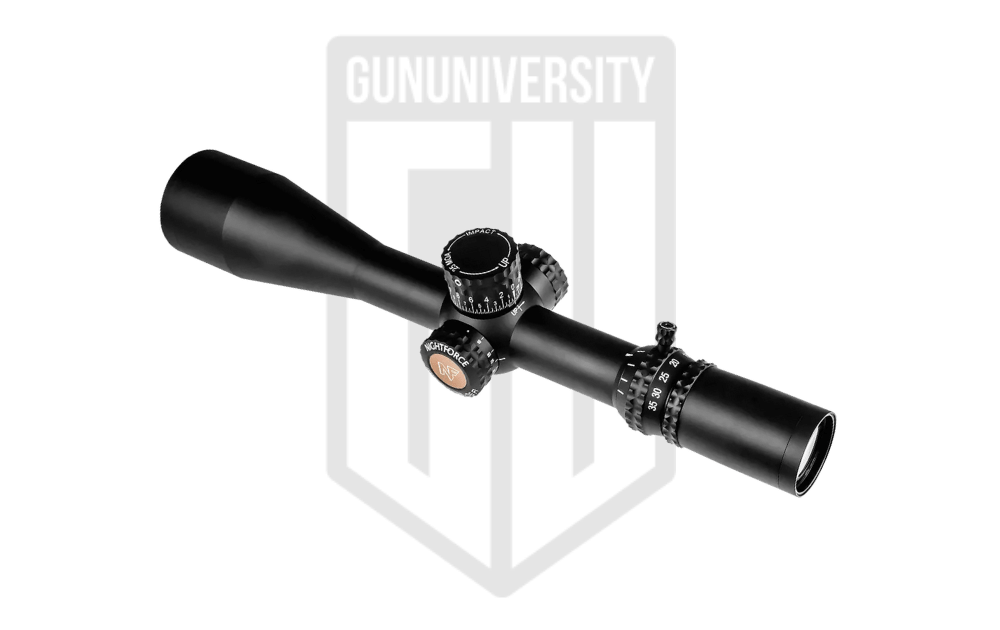

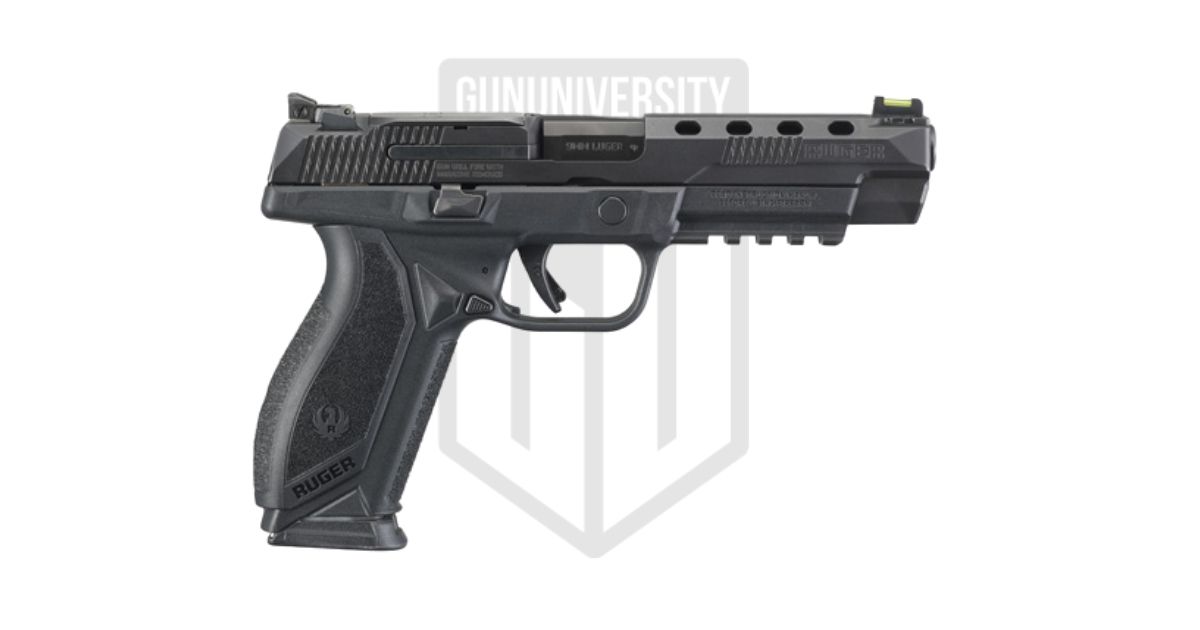
![Best Shooting Ear Protection for 2025 [Range-Tested!]](https://gununiversity.com/wp-content/uploads/2021/09/best-shooting-hearing-protection.jpg)
![Best 9mm Pistols [2025]: Ranked by Size & Use](https://gununiversity.com/wp-content/uploads/2021/09/Best-9mm-featured-1.jpg)